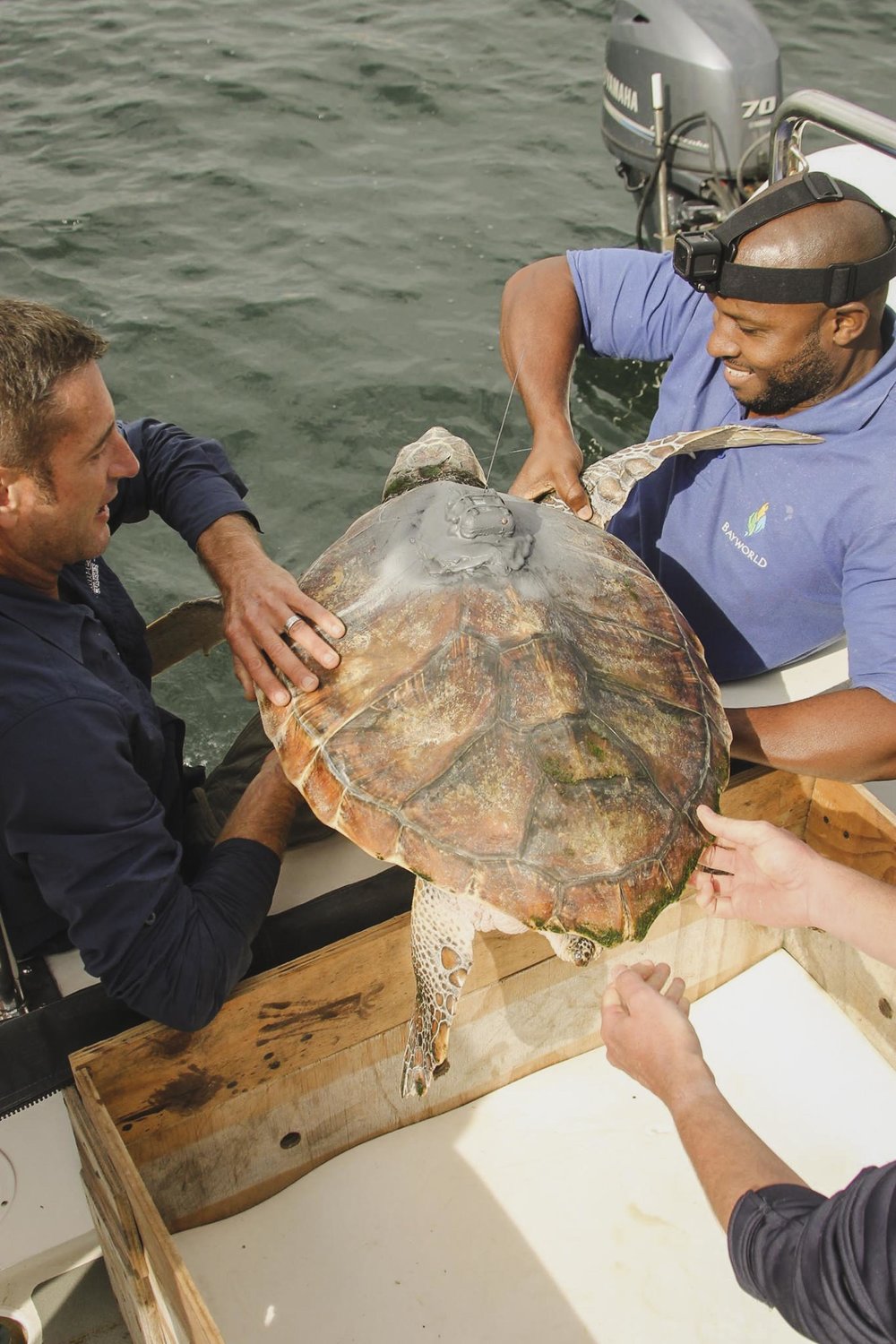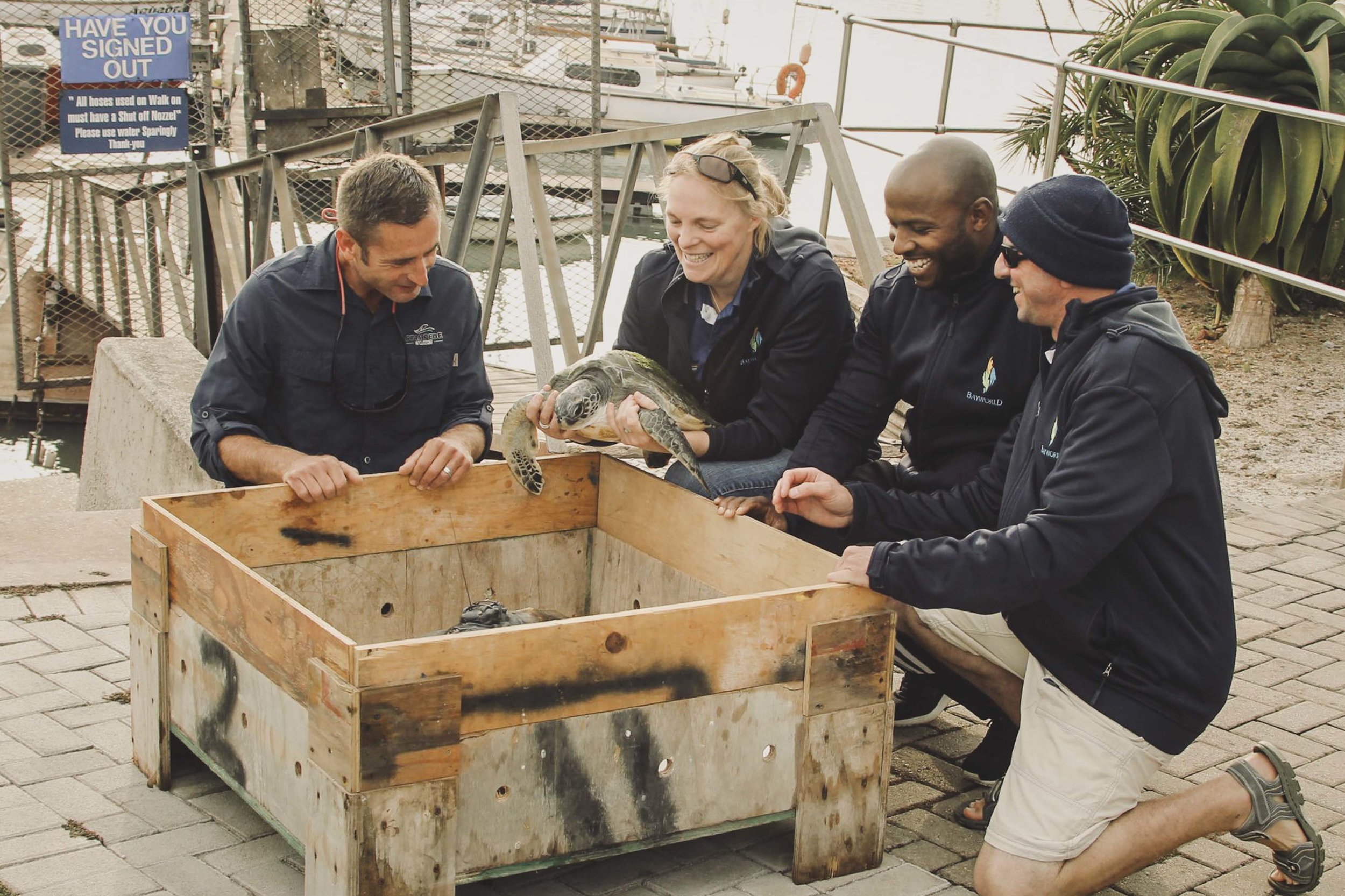April 17thwas bitter sweet, Oliver a 10-year-old Loggerhead turtle and Aloe, a 4-year-old female Green Turtle were ready for release. Oliver had been rescued from the East London Zoo and Aloe washed up in the Jeffrey’s Bay surf, unable to dive. Both had done their time at Bayworld, fighting for survival with the assistance of their rehabilitation team. Akhona will tell you that Oliver had a lot of fight left in him and he wasn’t scared to show off his sharp beak and extremely strong jaw – that boy could bite, dictating that he was ready for open seas. Aloe on the other hand suffered a large air bubble under the skin which wasn’t allowing her to dive or submerge himself under water…As sea turtles are air breathing reptiles, they need to surface to breathe. Sea turtles can hold their breath for several hours, depending upon the level of activity. A resting or sleeping turtle can remain underwater for 4-7 hours. However, a stressed turtle, entangled in fishing gear for instance, quickly uses up oxygen stored within its body and may drown within minutes. They do however forage (feed) under water, and if they can’t submerge themselves, they will starve. The team had worked with Aloe for 4 months, aiding in her recovering and today was release day…Any animal lover understands the emotional attachment when caring for an injured creature. You are delighted in their rehabilitation but saddened by the goodbye…
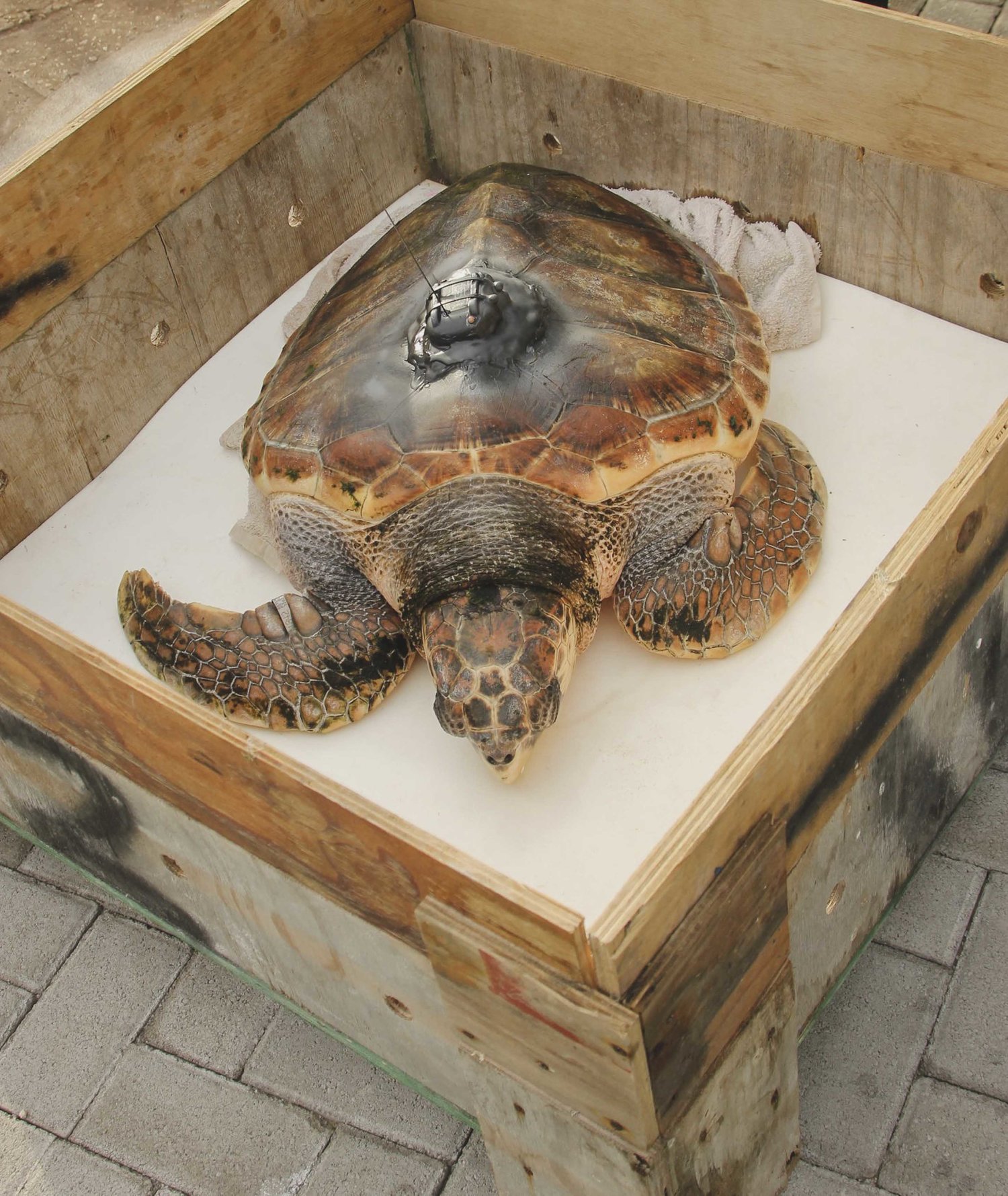
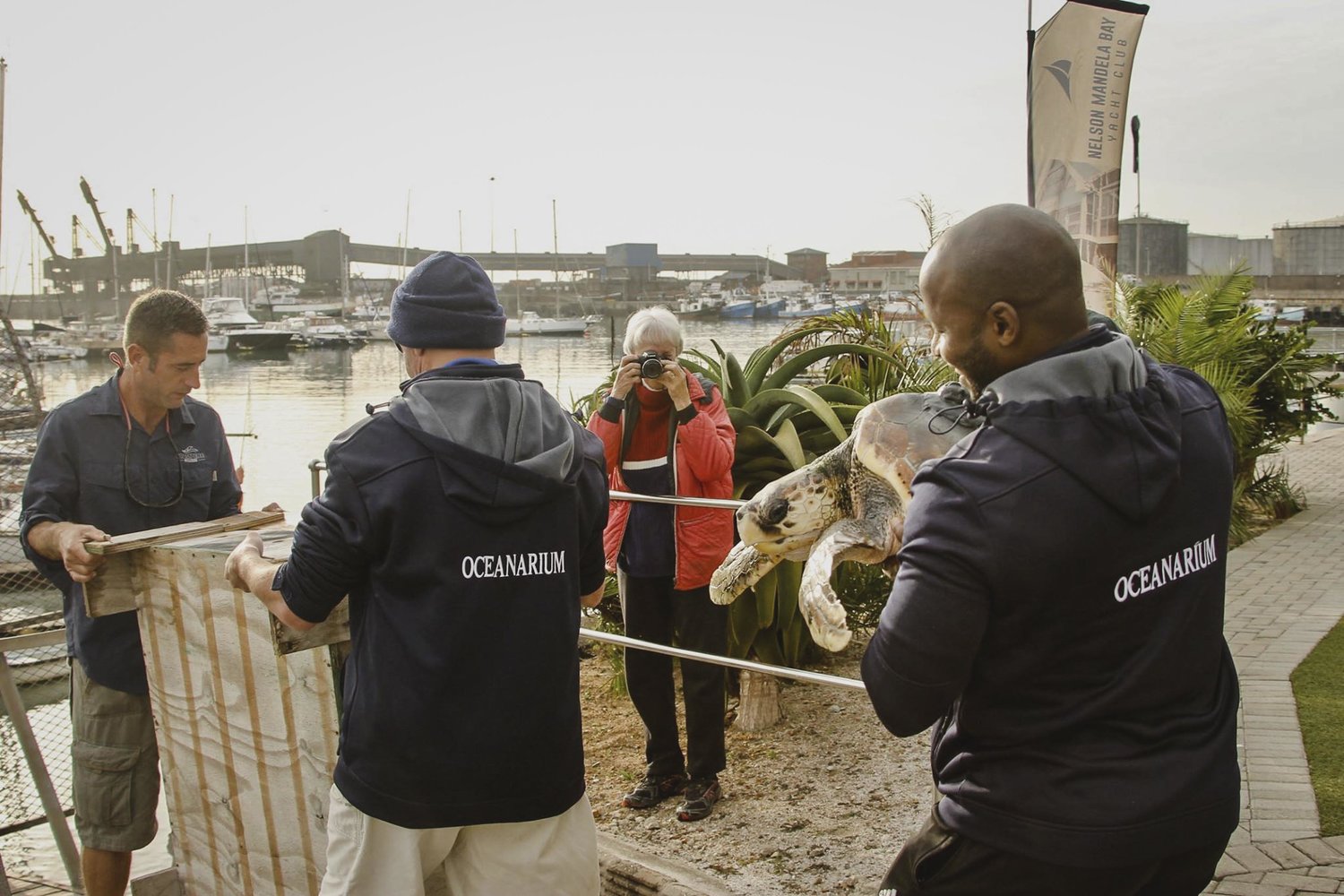
After loading the turtles, we set off for St Croix Island. The turtles were stressed, contained in boxed crates with damp towels, anxiously awaiting their fate. Knowing they could smell freedom made the journey that much longer. The saving grace is that Stampede is built with slim hulls which enable comparatively high speeds with relatively low power, extraordinary comfort and stability when compared with other boat configurations. These turtles couldn’t have asked for a smoother ride! On route we were greeted by a 3km stretch of Bottle Nose Dolphin, frolicking in the waves. A serenading of sorts, like these sentient beings were aware of the freedom about to be bestowed on their two long lost friends…a remarkable experience.

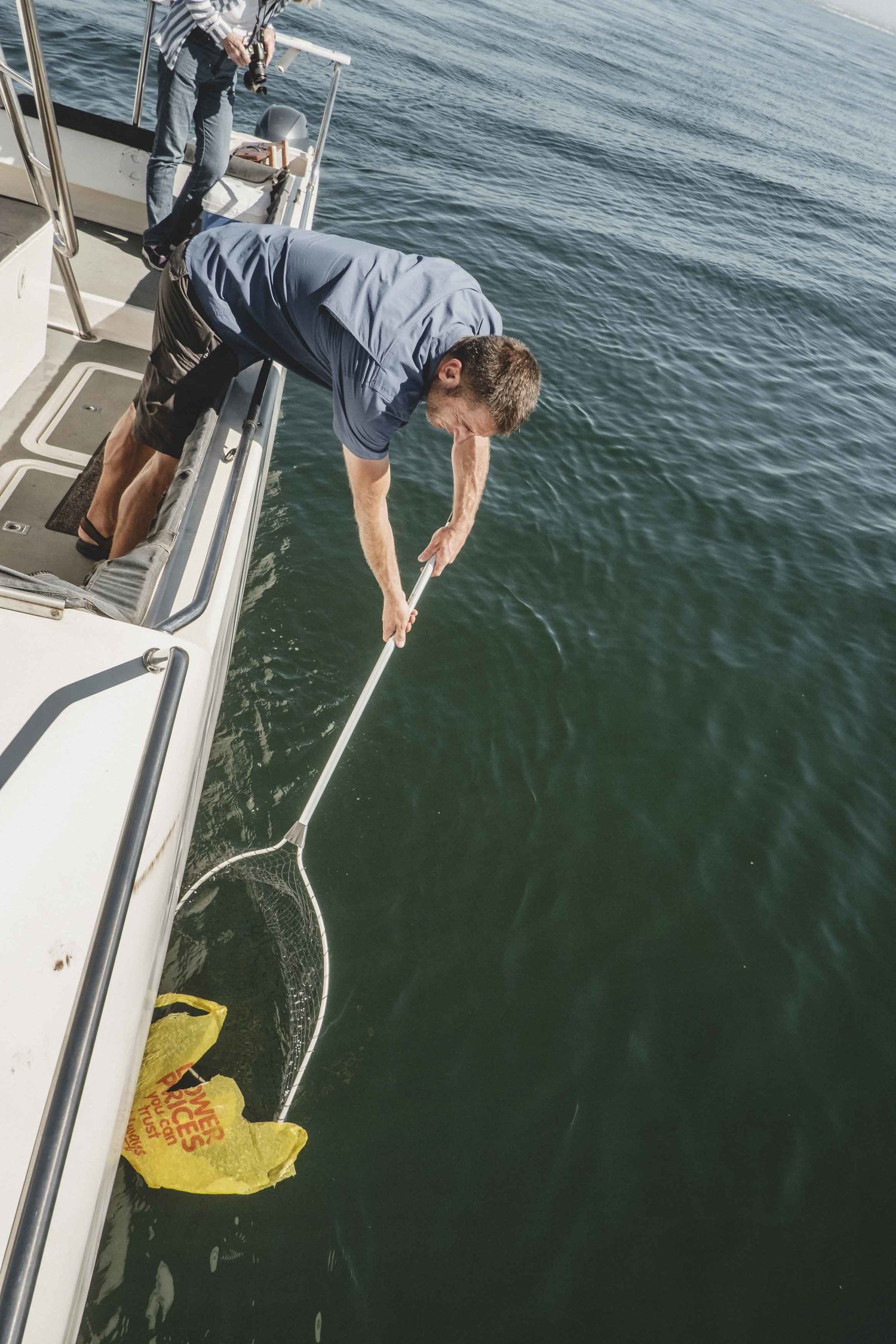
Keep in mind that Turtles are opportunistic feeders, meaning they will eat just about anything, sort of like a billy goat. Unfortunately, it is nearly impossible for a turtle to break-down synthetic material once it is ingested, and very often it will cause an intestinal blockage, called an impaction. Of course, a turtle has little chance of eliminating the impaction on its own in the wild and this condition will usually lead to starvation. This is one reason why we need to keep track of our trash and make sure it is properly disposed of.
We found a safe spot just off the island, each person on board had their own moment of silence as the process of release was started. It’s not an easy thing to lift a 35kg turtle over board. Surprisingly, neither turtle put up a fight! It was one of the most liberating experiences to watch. Robbie and Akhona balanced themselves at the edge of the boat, handling each turtle carefully, until they could reach the water. Watching them approach the water, becoming submerged and swimming to freedom felt like a wave crashing over you, cleansing the depths of your soul. We did it, they were free! Today we were privileged enough to walk with two turtles, even if just for a little while – and we were made aware that this experience will forever change us!

